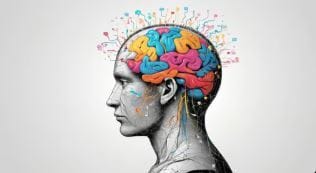- The CyberLens Newsletter
- Posts
- The AI Dependency Dilemma: Are We Trading Data Protection Expertise for Algorithmic Convenience?
The AI Dependency Dilemma: Are We Trading Data Protection Expertise for Algorithmic Convenience?
How Over-Reliance on Artificial Intelligence in Cybersecurity Could Undermine Traditional Defense Strategies and Human Expertise
Looking for unbiased, fact-based news? Join 1440 today.
Join over 4 million Americans who start their day with 1440 – your daily digest for unbiased, fact-centric news. From politics to sports, we cover it all by analyzing over 100 sources. Our concise, 5-minute read lands in your inbox each morning at no cost. Experience news without the noise; let 1440 help you make up your own mind. Sign up now and invite your friends and family to be part of the informed.
Interesting Tech Fact:
In 2007, researchers discovered that residual data left in a computer's RAM—known as "cold boot data remanence"—could be extracted even after the machine was powered off, simply by freezing the memory chips with liquid nitrogen. This obscure vulnerability allowed attackers to retrieve encryption keys from RAM, bypassing traditional security measures. It sparked a wave of research into hardware-level data protection and helped shape modern memory encryption standards used in today’s secure systems.
The Promise and Peril of AI in Data Protection
Artificial Intelligence (AI) has rapidly become the cornerstone of modern cybersecurity and data protection frameworks. With machine learning models identifying anomalies faster than any human analyst and natural language processing algorithms parsing thousands of documents within seconds, it’s no surprise that enterprises have adopted AI solutions to safeguard their digital assets. However, as AI-driven tools proliferate, a critical question emerges: are we becoming too dependent on AI to secure our data? And if so, are we unknowingly eroding the very foundations of cybersecurity strategy — human oversight, adaptability, and critical thinking?
This editorial examines the long-term implications of excessive reliance on AI in data protection. While AI offers efficiency and precision, its unchecked dominance risks creating systemic vulnerabilities, regulatory blind spots, and a de-skilling of cybersecurity professionals. As we move toward AI-led defenses, we must assess whether our dependency is strengthening security — or simply automating ignorance.
1. The Rise of AI-Driven Data Protection Systems
AI has become deeply embedded in nearly every aspect of cybersecurity. From intrusion detection systems (IDS) and behavioral analytics to automated incident response and predictive threat intelligence, AI excels at tasks that are time-consuming and error-prone for human analysts.
Key areas where AI is revolutionizing data protection include:
Anomaly Detection: Machine learning models trained on historical network traffic can detect deviations in real time.
Automated Response: AI can isolate a compromised endpoint within seconds — an action that could take minutes or hours manually.
Data Loss Prevention (DLP): Algorithms flag potential data exfiltration attempts with high precision.
Risk Scoring: AI correlates diverse data sets to evaluate risk levels per user, device, or application.
These innovations allow security teams to scale their efforts, reduce false positives, and preemptively defend against evolving threats.
2. The Dependency Paradox: Strength or Weakness?
While AI strengthens perimeter and endpoint defenses, there is growing concern that its omnipresence could create a paradoxical weakness — a loss of human intuition and strategic thinking.
Consider these emerging ramifications:
a. De-Skilling the Cyber Workforce
As organizations automate more functions — such as vulnerability management, malware analysis, and compliance auditing — there’s a reduced need for cybersecurity teams to develop core analytical and forensic skills. This shift can lead to a generation of professionals who rely on dashboards and alerts rather than deeply understanding the threats they face.
b. Overconfidence in AI Precision
AI models are only as good as their training data. In environments where zero-day attacks or novel threat vectors appear, AI may fail silently — or worse, misclassify malicious activity as benign. Blind trust in AI can lull organizations into a false sense of security, reducing vigilance and manual cross-checking.
c. Limited Transparency and Explainability
Many AI systems, particularly those using deep learning, are "black boxes." Without clear explanations of how decisions are made, it becomes challenging to audit or validate the rationale behind critical security responses. This opacity can have regulatory and ethical consequences, especially when decisions affect customer data or involve automated compliance measures.

3. When AI Fails: Real-World Examples and Consequences
History already shows us the dangers of overreliance:
2017 Equifax Breach: Despite having access to automated vulnerability scanning tools, the company failed to patch a critical Apache Struts flaw, which led to the compromise of 147 million records. The tools existed — but the human follow-through was lacking.
Microsoft’s AI Email Filters (2021): Attackers bypassed machine learning-powered phishing filters by using zero-text techniques and image-based payloads. AI systems misclassified the content as safe because it didn’t match known patterns.
Tesla’s Autopilot (Analogy): While not a cybersecurity example, Tesla’s over-reliance on machine learning for autonomous driving shows a parallel risk. Users assumed full automation meant full safety, leading to fatal accidents. The same psychology applies in cybersecurity — AI tools are not infallible, but humans often treat them as such.
4. The Strategic Limitations of AI in Data Protection
AI, for all its prowess, cannot account for everything:
Policy Design and Implementation: Crafting a data governance framework, understanding industry-specific regulations, or making strategic decisions about cloud vs. on-premise storage are tasks rooted in human judgment.
Contextual Awareness: AI might detect a login attempt from an unusual IP address — but it cannot always assess business context (e.g., was this the CEO accessing remotely during a crisis?).
Ethical Considerations: Should you collect biometric data to secure access to critical systems? AI can’t make the ethical call; humans must weigh privacy against security.

5. What’s Lost Without Human-Led Data Protection Strategies?
Relying solely on AI erodes our ability to:
Develop Red-Teaming Skills: Understanding how attackers think requires creativity, something AI lacks.
Adapt Quickly to Novel Threats: Human analysts often spot subtle, non-pattern-based anomalies — like social engineering — that evade AI.
Balance Regulation and Innovation: Compliance with laws like GDPR, HIPAA, or CCPA involves strategic planning, not just automation.
6. Reclaiming Balance: Hybrid Defense Models
To prevent AI from becoming both a crutch and a vulnerability, organizations must embrace hybrid defense models:
AI-Augmented, Not AI-Driven: Humans should direct strategy while AI handles execution. For example, AI can triage incidents, but humans determine escalation.
Invest in Cyber Literacy: Upskill analysts in AI literacy — and conversely, teach AI engineers the nuances of security operations.
Build Explainable AI (XAI): Prioritize solutions with transparency features that show how and why decisions were made.
7. The Future of Cybersecurity: Co-Evolution, Not Replacement
Looking ahead, the goal should not be to eliminate human decision-making, but to co-evolve with AI systems. Emerging models like Human-in-the-Loop Security Operations Centers (SOC) and Adaptive Threat Response Architectures offer pathways where AI serves as a force multiplier, not a gatekeeper.
Additionally, AI will need ethical governance. As systems become more autonomous, frameworks such as NIST’s AI Risk Management Framework and ISO/IEC 42001 will be vital to ensure responsibility, traceability, and fairness in automated security systems.

Case Study: Financial Sector’s AI Integration Backfires
A multinational bank implemented a fully automated fraud detection system powered by AI. Within months, false positives surged by 37%, leading to delayed transactions and angry customers. The root cause? The system flagged new user behavior during the COVID-19 lockdowns as suspicious — because it had no contextual awareness of the pandemic. The bank eventually reintroduced human analysts to review alerts and re-trained its AI models with pandemic-specific data. This incident underscores the importance of flexible, context-aware systems that combine algorithmic efficiency with human judgment.
Conclusion: Don’t Surrender Strategy to Software
AI is an invaluable ally in the fight to protect data, but it should never be mistaken for a complete solution. Over-reliance on AI not only risks operational blind spots but also atrophies the human expertise that built the very foundation of cybersecurity.
Organizations must resist the temptation to automate critical thinking out of existence. Instead, we must reclaim a balanced approach — one that views AI as a partner, not a panacea. Only then can we ensure that our data protection strategies remain both resilient and intelligent in an era of rapid technological acceleration.

In a world dominated by artificial intelligence, the future of data protection depends on how wisely we wield the tools we’ve created. Stay ahead with CyberLens, your source for deep insights, expert strategies, and future-forward cybersecurity intelligence.
Subscribe now to receive monthly briefings on AI, digital defense, threat intelligence, and real-world analysis shaping tomorrow's security landscape.



